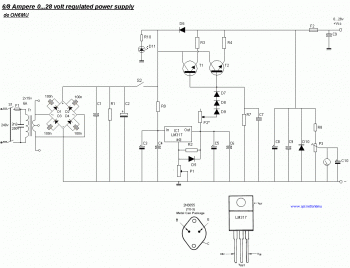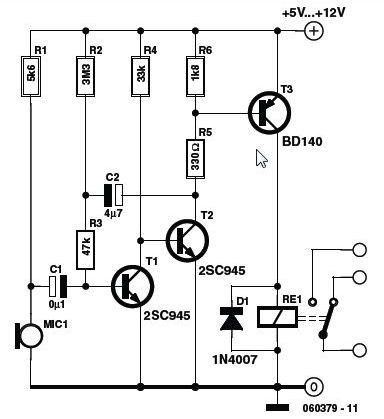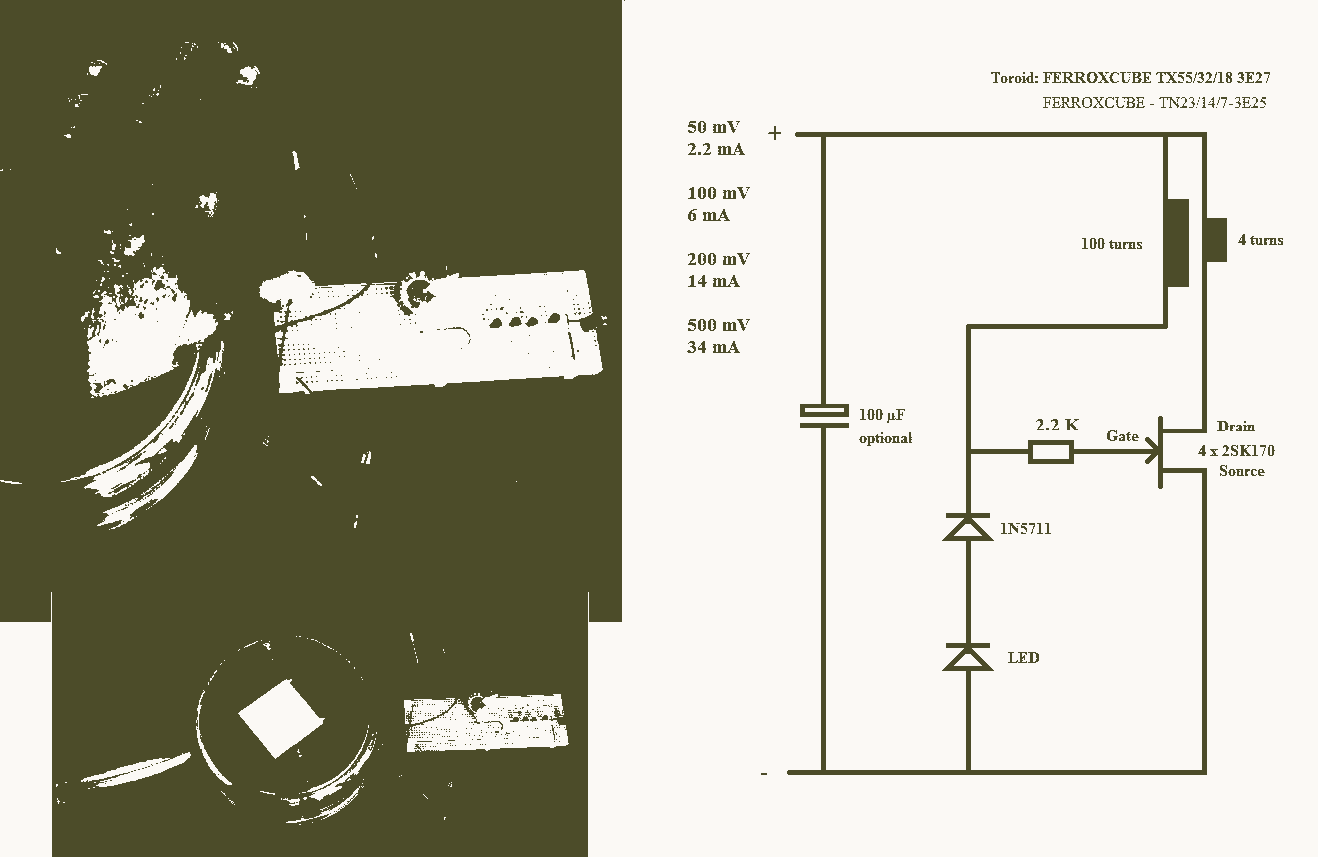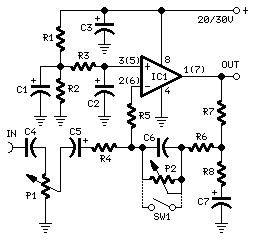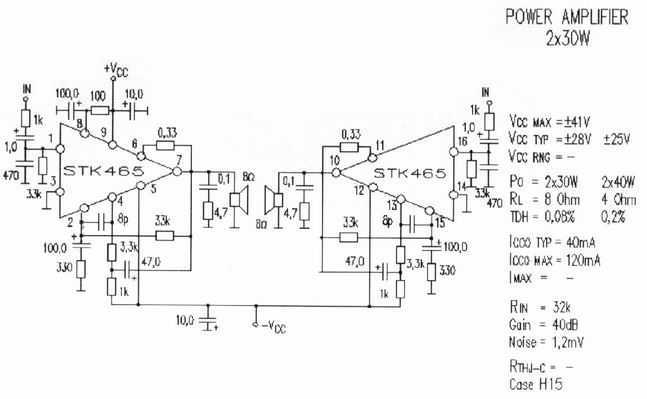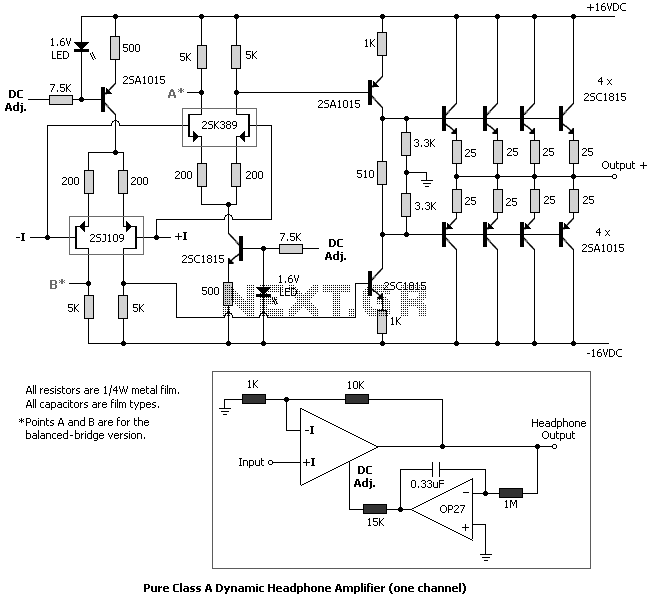
70W Stereo Audio Amplifier Circuit based STA550
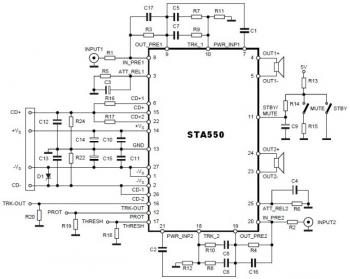
This is a stereo amplifier circuit diagram. The amplifier will produce stereo output channels with a power audio output that can reach up to 70W for each channel. The amplifier is built using the STA550 chip from STMicroelectronics. It is important to note that this amplifier is a bridge amplifier, and the speaker terminals should not be connected to the ground line. An audio amplifier is an electronic device that amplifies low-power audio signals (primarily within the frequency range of 20 - 20,000 Hz, which corresponds to the human range of hearing) to a level suitable for driving loudspeakers. It serves as the final stage in a typical audio playback chain. The preceding stages in this chain consist of low-power audio amplifiers that perform functions such as pre-amplification, equalization, tone control, and mixing/effects, or audio sources like record players, CD players, and cassette players. Most audio amplifiers require these low-level inputs to conform to line levels. While the input signal to an audio amplifier may measure only a few hundred microwatts, its output can be tens, hundreds, or even thousands of watts. Additional information regarding power audio amplifiers can be found on Wikipedia. A video tutorial is available that demonstrates how to build a simple audio amplifier based on the LM386 chip, which can be constructed for under $20 (or potentially less than $8 in certain countries) and used to amplify any low-level audio signal, including that from guitars, bass instruments, or MP3 players.
The stereo amplifier circuit diagram represents a robust design capable of delivering high-quality audio output. The STA550 chip is a highly efficient Class D amplifier that provides the necessary power amplification while minimizing heat generation, making it suitable for various audio applications. Given its bridge configuration, the amplifier can effectively double the output voltage across the load, thus achieving higher power levels suitable for driving larger speakers.
In the circuit, the input stage typically includes capacitive coupling to block any DC offset, ensuring that only the audio signal is amplified. The gain of the amplifier can be set using external resistors, allowing for flexibility depending on the desired output level. The output stage connects to the speakers, where care must be taken to avoid grounding issues, as improper connections can lead to distortion or damage to the amplifier.
In addition to the STA550 chip, the circuit may incorporate various passive components such as resistors, capacitors, and inductors to filter noise and stabilize the operation. Power supply considerations are also critical; a stable DC supply is necessary to maintain performance and prevent fluctuations that could affect audio quality.
For applications requiring lower power output, alternative amplifier designs, such as those based on the LM386 chip, offer a simpler solution. These designs are particularly appealing for DIY projects and can be built with minimal components, making them cost-effective for amplifying low-level audio signals in personal audio systems.This is a stereo amplifier circuit diagram. The amplifier will produce stereo output channel with the power audio output can reach up to 70W for each channel. The amplifier built based great amplifier chip STA550 from STMicroelectronics. Take a note that this amplifier is a bridge amplifier, the speaker`s terminal should not connected to the groun
d line. An audio amplifier is an electronic amplifier that amplifies low-power audio signals (signals composed primarily of frequencies between 20 - 20 000 Hz, the human range of hearing) to a level suitable for driving loudspeakers and is the final stage in a typical audio playback chain. The preceding stages in such a chain are low power audio amplifiers which perform tasks like pre-amplification, equalization, tone control, mixing/effects, or audio sources like record players, CD players, and cassette players.
Most audio amplifiers require these low-level inputs to adhere to line levels. While the input signal to an audio amplifier may measure only a few hundred microwatts, its output may be tens, hundreds, or thousands of watts. More explanation about power audio amplifier can be found at wikipedia. org This is a video tutorial about how to a very simple audio amplifier based on the LM386 amplifier chip.
It can be built for less than $20 (or might be less than $8 in some countries) and used to amplify any low level audio signal including a guitar, bass or mp3 player. 🔗 External reference
The stereo amplifier circuit diagram represents a robust design capable of delivering high-quality audio output. The STA550 chip is a highly efficient Class D amplifier that provides the necessary power amplification while minimizing heat generation, making it suitable for various audio applications. Given its bridge configuration, the amplifier can effectively double the output voltage across the load, thus achieving higher power levels suitable for driving larger speakers.
In the circuit, the input stage typically includes capacitive coupling to block any DC offset, ensuring that only the audio signal is amplified. The gain of the amplifier can be set using external resistors, allowing for flexibility depending on the desired output level. The output stage connects to the speakers, where care must be taken to avoid grounding issues, as improper connections can lead to distortion or damage to the amplifier.
In addition to the STA550 chip, the circuit may incorporate various passive components such as resistors, capacitors, and inductors to filter noise and stabilize the operation. Power supply considerations are also critical; a stable DC supply is necessary to maintain performance and prevent fluctuations that could affect audio quality.
For applications requiring lower power output, alternative amplifier designs, such as those based on the LM386 chip, offer a simpler solution. These designs are particularly appealing for DIY projects and can be built with minimal components, making them cost-effective for amplifying low-level audio signals in personal audio systems.This is a stereo amplifier circuit diagram. The amplifier will produce stereo output channel with the power audio output can reach up to 70W for each channel. The amplifier built based great amplifier chip STA550 from STMicroelectronics. Take a note that this amplifier is a bridge amplifier, the speaker`s terminal should not connected to the groun
d line. An audio amplifier is an electronic amplifier that amplifies low-power audio signals (signals composed primarily of frequencies between 20 - 20 000 Hz, the human range of hearing) to a level suitable for driving loudspeakers and is the final stage in a typical audio playback chain. The preceding stages in such a chain are low power audio amplifiers which perform tasks like pre-amplification, equalization, tone control, mixing/effects, or audio sources like record players, CD players, and cassette players.
Most audio amplifiers require these low-level inputs to adhere to line levels. While the input signal to an audio amplifier may measure only a few hundred microwatts, its output may be tens, hundreds, or thousands of watts. More explanation about power audio amplifier can be found at wikipedia. org This is a video tutorial about how to a very simple audio amplifier based on the LM386 amplifier chip.
It can be built for less than $20 (or might be less than $8 in some countries) and used to amplify any low level audio signal including a guitar, bass or mp3 player. 🔗 External reference
